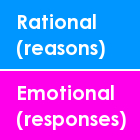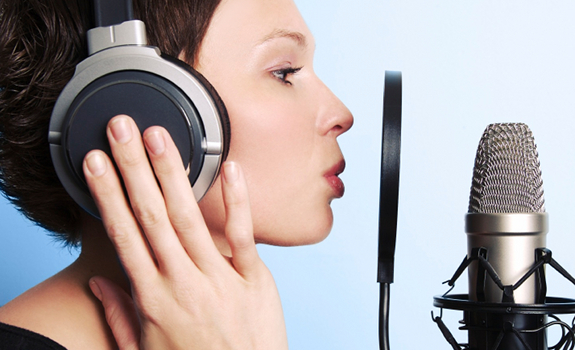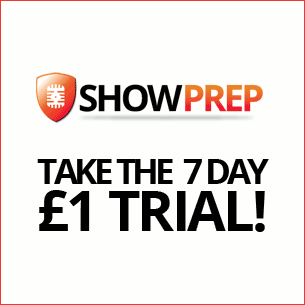How to make your radio commercial or station promo more effective? Some research-based copywriting & production tips for powerful radio spots.
Producing your commercials and promos in a certain way will enable you to build a relationship with your audience. Q-music gathered the success factors of effective radio ads in a report. We’ll highlight some key insights you could use when copywriting and producing radio spots, commercials & promos.
“Combining production characteristics and audience response has led to interesting findings”
Educate (potential) advertising clients
The CHR-leaning Hot AC station wants to inspire advertisers and agencies to create more effective radio campaigns. They flew creative radio and brand sound specialist Tony Hertz to Europe for over ‘fifty’ workshops to not only refine their own copywriting and production skills, but also to share this information with their clients and contacts – a great way of relationship management through educational marketing! In addition, Q-music hires InSites Consulting to analyze and test Dutch radio ads. In an online survey called On AIR (Ad Impact Research), 15-54 year-old respondents are sharing their opinions about a series of radio commercials on a monthly basis. At the end of 2014, the station published a report called Drivers for a Successful Radio Commercial, which contains some key findings.
 Research individual radio commercials
Research individual radio commercials
When the report was published, the researchers had described a total of 563 radio commercials based on a list of 57 criteria, such as the use of music and voices. The next stage was to test every spot’s familiarity (including recall and attribution) as well as likeability and impact (on people’s knowledge, attitude and behavior) using the On AIR research, incorporating test results of roughly 100 respondents per spot.
Implement commercial test results
Combining the production characteristics of and audience response to every spot has led to interesting findings, which, according to Q-music, are compatible with The 7 Secrets of Creative Radio Advertising as defined by Tony Hertz. So let’s have a look at the report, which may help radio advertisers and radio stations to produce more effective commercials and promos. The report is focusing on radio ads, but many principles may also apply to spots for your radio station’s on-air self-promotion.
“Harness radio’s emotional power”
Activate your target audience
One of the more obvious insights is that if you achieve a high likeability for your commercial or promo, there’s a greater chance that people will be (thinking about) taking action – such as buying a product. There’s also a relation between likeability and activation, meaning that people will not only receive the message, but will also do something with it. There are 3 levels of activating your listeners, going deeper with every step:
- Get people to receive your message (by using public sources or personal recommendations)
- Get people to spread it (by talking with each other personally or through social media)
- Get people to use it (by creating content around it, e.g. blogging or tweeting about)
 Balance thought & feeling triggers
Balance thought & feeling triggers
Today, radio is often used for rational messages with a short-term tactical purpose (like a sales promotion), rather than emotional communication for a long-term strategic reason (like brand building). But to activate your audience and stimulate their attribution (connecting your message with your brand), better convince people rationally and touch them emotionally. It’s the most powerful combination for an effective radio commercial.
Include new & relevant info
(Too much) rational information may even cause aversion. On AIR indicates that often-used calls to action like ‘visit our website’ or ‘come to our store’, reduce ‘originality’, ‘relevance’ and ‘sympathy’. What works is to mention something new, like a new product. And while discounts may decrease a positive attitude towards a brand or message, they may also increase recall, and create sensation. In any case, when you search for emotions (like the feeling connected to using a product) and show that you understand your audience, your campaign will be much more effective. Most people will take action based on feelings and impulses, instead of facts and information, so harness radio’s emotional power.
“Speaking to an individual is related to higher scores for influencing”
Tell a ‘visual’ story
Being a ‘theatre of mind’, radio is a great medium to paint pictures in people’s minds through storytelling. You can begin your commercial by telling a story – for example, with a dialogue or a soundscape – that listeners can ‘see’ happening in front of their ‘eyes’. It’s good to create a storyboard for the entire spot, including notes on where to use certain character voices, sound effects and music beds. Commercials with a dialogue and/or a story tested very well in this research; they’re perceived as being original and fun, and also show high scores in terms of recall and attribution.
 Use music & sound effects
Use music & sound effects
There are many ways to paint a picture in sound, but it’s evident that spots which include background music and sound effects are more appreciated by the audience than those without production elements. Carefully chosen music beds and sound FX make a commercial more recognizable, and help to create a connection with the brand. Such spots are seen as more credible, relevant, warm, artistic and professional.
Connect on personal level
Many radio commercials are still aimed at an anonymous mass, instead of talking to one particular person, while radio is a very personal (one-to-one) medium. You can use that for your benefit. The more you know about your target audience (and the more you keep your model listener in mind when copywriting & producing your spot), the better chance you have to actually reach them with it. Speaking to an individual (instead of a group or no-one in particular) is related to higher scores for influencing people’s knowledge, attitude and behavior, and that respondents would be more likely to see the spot’s content as relevant. So include a personal value for your target listener, basically answering the question: ‘what’s in it for me?’.
“Radio is not a medium for details”
Choose a positive approach
Radio: The Emotional Multiplier is a publication of UK Radio Advertising Bureau (which promotes radio among advertisers and agencies). It positions radio as a very positive medium as it generates the highest energy & happiness levels, compared to TV and online. The theory is that radio ads could be very effective as they’re being heard while people are in a positive (thus, receptive) mindset. On AIR shows that people give a higher overall rating to spots that convey a positive message. Positive spots also get higher scores for originality, relevance, recognition and sympathy.
 Avoid too much humor
Avoid too much humor
While humor in a spot makes it more ‘original’ in people’s perception, it leads to a lower overall appreciation, according to this research. It also means less impact on ‘behavior’, and lower ratings for ‘credibility’ and ‘relevance’ for the commercials that have been tested. It might be good to use humor when it’s functional. For example, in a dialogue at the beginning of your spot, which should be an engaging ‘earcatcher’ for your audience.
Focus on one story
An often-made mistake is to squeeze every possible bit of information into a spot. People tend to listen to the radio while they’re doing something else. Radio isn’t a medium for details, so practice ‘less is more’ and stick to ‘one ad, one message’, keeping it simple and straightforward. Should you really want to add that extra benefit or special promotion, rather say it in a tag-on that functions as a reminder, and is usually scheduled one or more positions after the main spot in a stopset. On AIR also looks at joint advertising (where several different brands are mentioned in one commercials). Not surprisingly, that isn’t a benefit. Spots that include one brand only seem receive a better score.
“Sound like being engaged in an everyday conversation”
Consider female lead voice
Most commercials are being recorded by one or two voiceover talents. Spots with just one voice are being seen as the most ‘professional’ and seem to have the most ‘impact’ on people’s behavior, compared to spots which include multiple voices. Provided that it suits the brand and product, you might want to use a female voice talent to distinguish your production from the many male-dominated commercials out there. On AIR respondents associate a female voiceover with ‘sympathy’ and ‘recognition’, and describe such a spot as being more influential in regards to ‘behavior’ (such as the action to buy a product).
 Engage listeners through conversations
Engage listeners through conversations
Even when typical ‘voiceovers’ are being perceived as professional, people also seem to get tired of them. Authentic conversations and a natural tone of voice are now a trend, so you could write a script for (a dialogue between) one or more character voices. These can make a radio commercial more ‘original’, ‘distinctive’ and ‘funny’, and help to connect a spot to the brand or product (which is obviously very important).
Have a real conversation
Even when many commercials are voiced on a high pace, most audiences seem to prefer V/Os who use a normal speech tempo and natural pauses, in other words: sound like being engaged in an everyday conversation. ‘Likeability’ and ‘sympathy’, ‘attitude’ and ‘behavior’, ‘recall’ and ‘attribution’, they all show higher scores within a conversational approach. The key is to avoid a hyperactive, artificial voiceover, and to rather use a human, personal talent that speaks on a normal tone.
“Know the power of a memorable sound logo”
Take a different position
A given product category usually includes many brands, so you always want to make your (client’s) radio commercial stand out. To apply storytelling techniques, like building excitement, you need time. Luckily, this research indicates that longer commercials are perceived as being more ‘original’ and ‘distinctive’, as well as more ‘professional’ and ‘important’. Maybe because we live in a world of short messaging, where long-form content stands out? Respondents also felt that longer spots usually not only fit the brand better, but also lead to a better attitude towards it.
 Consider 30+ second commercials
Consider 30+ second commercials
Many advertisers are holding on to a maximum duration of 20″, which is the average length of a radio commercial in the Netherlands. On AIR indicates that (in markets where there’s a trend for short-form spots), you can stand out by using well-produced and entertaining 30- to 35-second spots. From all tested commercials, those with a duration around half a minute get the highest average rating in this research.
Incorporate a sound logo
While you could mention it at the beginning and/or in the middle, in any case you should mention your brand name at the end of your spot (combined with your pay-off or slogan). Positioning your brand at the end will not only increase your recall; it also helps to attribute a commercial to you, increasing your brand awareness. Your branding becomes even stronger when you use a distinctive logo melody that people consciously or subconsciously associate with your brand name and/or slogan. Think of “Al-ways Co-ca-Co-la”, and you’ll know the power of a memorable audio logo.











Thank you, Callum – appreciate your comment!
I did not think that there was so much advice you could give on creating a radio ad, but you make a lot of cool points. One of the more underrated suggestions, in my opinion, is making the ad positive. After all, no one likes feeling sad and a positive feeling is more likely to encourage someone to buy your product.